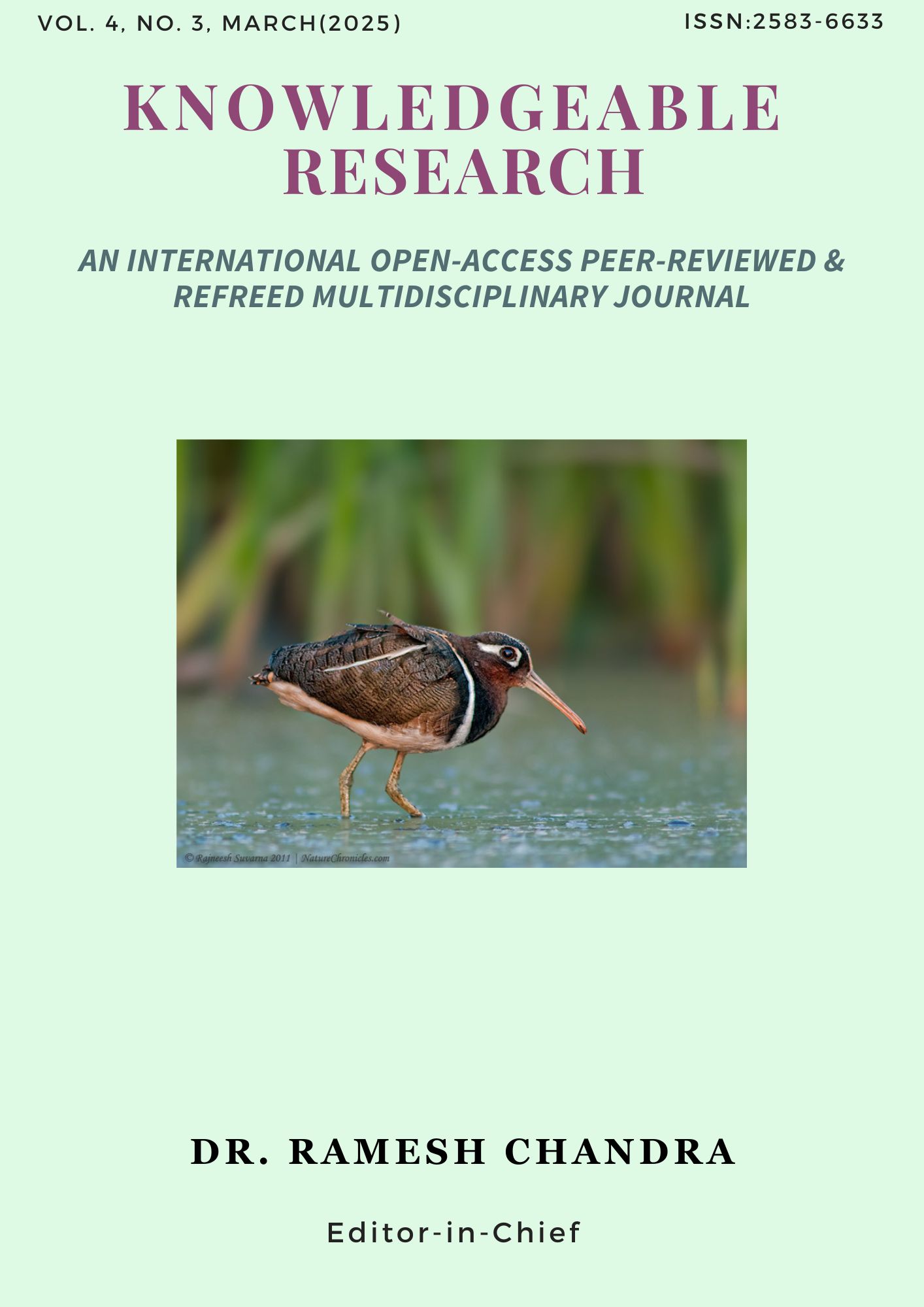Language Evolution and Historical Linguistics: Study of Hindi Language
Main Article Content
Abstract
The evolution of Hindi language is an elaborate and multi-dimensional process that reflects thousands of years of linguistic change and cultural interaction. Evolution is a multi-dimensional phenomenon that is linked to many historical, social, political and cultural factors and is not just a linear process. Starting from the deep scientific structure of Sanskrit, through Prakrit and Apabhramsa to modern Hindi, this journey of linguistic evolution shows incredible changes. This process is not limited to changing the linguistic structure; it is like a living cultural document that reflects the diverse socio-cultural conditions of the Indian subcontinent.
This research paper presents a detailed analysis of the origin of Hindi language, various historical phases and the changes that have taken place in the language. The evolution of Hindi language has taken place from the Vedic period to the Mughal period, British rule and post-independence. The language has seen changes in meaning, vocabulary and capacity of expression in every era with its specific socio-cultural conditions. Foreign invasions, trade contacts, religious exchanges and cultural integration have made Hindi a symbol of diversity and flexibility. Words from languages like Persian, Arabic, Turkish, Portuguese and English have increased Hindi's vocabulary and expressive capacity. This linguistic inclusiveness is a clear example of India's pluralistic nature.
Downloads
Article Details
Section

This work is licensed under a Creative Commons Attribution-NonCommercial 4.0 International License.

